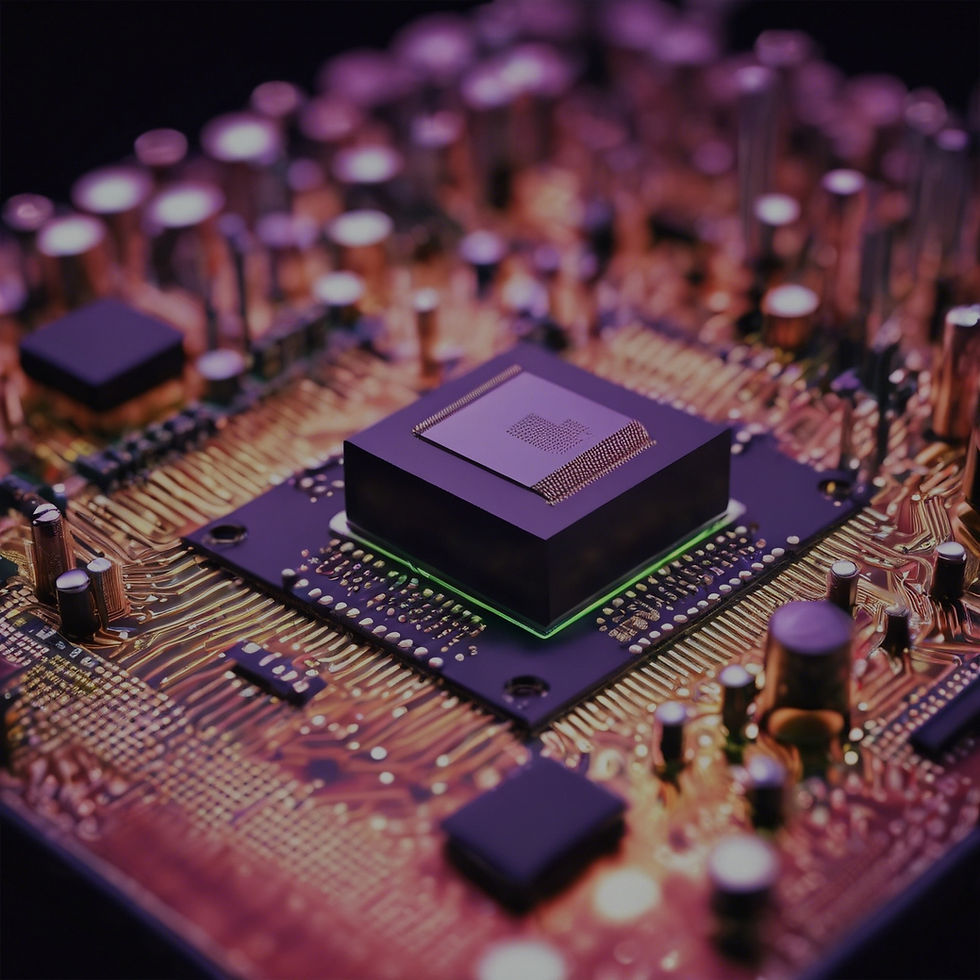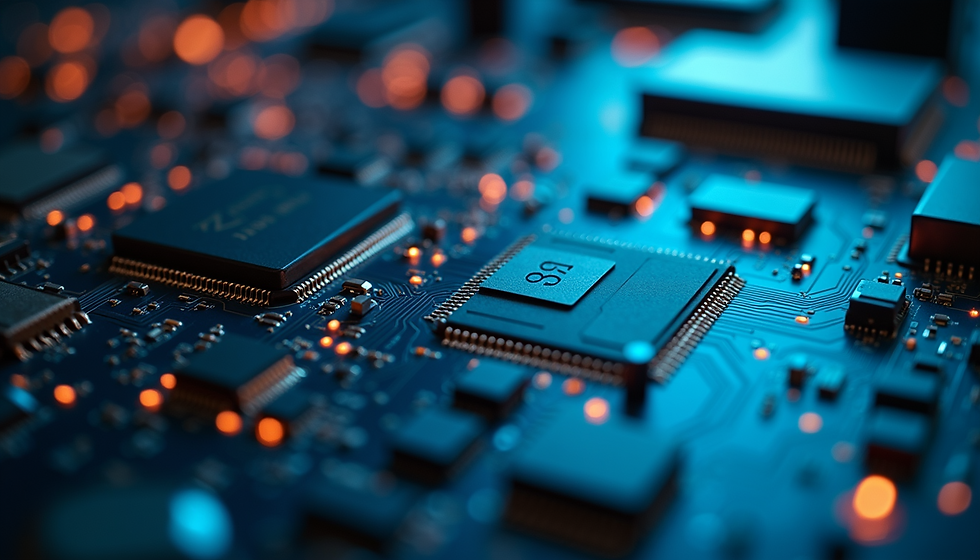Unleashing the Power of AI in PCB Design for Unmatched Efficiency
- Gulshan Sharma
- May 30
- 4 min read
Updated: Jul 17
In today's fast-paced tech world, printed circuit boards (PCBs) are integral to innovation. However, as demands for higher performance and efficiency rise, traditional PCB design methods struggle to keep up. Enter Artificial Intelligence (AI), a game-changing tool that is transforming the landscape of PCB design.
This post dives into how AI integration in PCB design enhances efficiency, lowers errors, and leads to significant advancements in the electronics sector.
[Request to join our exclusive Electronics Community. Major perks coming soon - https://forms.gle/ZzLwS2PQTPznGNe17]

Evolution of PCB Design
PCB design has dramatically progressed over the years. From hand-drawn layouts to advanced computer-aided design (CAD) software, the journey has always aimed to boost accuracy and speed.
Still, designers face many challenges today. They must juggle complex layouts, maintain signal integrity, and comply with strict manufacturing guidelines. As designs get more intricate, the risk of human error increases, which can lead to costly revisions and delays. Reports show that manufacturers estimate that 30% of project costs stem from reworks due to design errors.
The rise of AI in PCB design marks a significant turning point. AI can automate repetitive tasks, streamline workflows, and provide insights that help designers handle complex situations more easily.
How AI Enhances Efficiency
1. Automated Design Rule Checking
One of the most tedious parts of PCB design is manually checking design rules and constraints. AI tools can handle this task, comparing designs against set criteria and flagging potential violations.
With machine learning, AI can improve accuracy by learning from previous designs over time. For instance, a study found that AI-driven design rule checking reduced errors by 25% in a leading electronics company, significantly easing the burden on designers.
2. Intelligent Routing
Routing connections between PCB components is vital but can often be laborious. AI excels at pinpointing the best routes, considering factors like signal integrity and power distribution.
Using AI algorithms, these tools analyze thousands of potential configurations in just seconds. For example, a leading PCB design tool recently reported that it decreased routing time by up to 70%, allowing designers to focus on refining their innovations rather than getting lost in the minutiae.
3. Predictive Analytics for Design Improvements
AI's ability to provide predictive analytics offers valuable insights from historical data. If a layout consistently results in manufacturing issues, AI can identify this pattern and recommend alternative approaches.
This proactive strategy enables teams to create stronger designs and promotes a culture of continuous improvement. Companies that implement AI analytics report a reduction in design iteration cycles by nearly 30%.

4. Optimizing Component Selection
Choosing the right components is critical in PCB design. AI tools can evaluate performance specifications, availability, and cost, providing recommendations for optimal component selection.
This process enhances not only performance but also cost-effectiveness. By streamlining component choices, designers can devote more energy to creativity and innovation. For example, using AI-driven selection tools can save an average of 15-20% in component costs.
The Role of AI in Future PCB Design
While the benefits of AI in PCB design are clear, the future is poised for even more exciting changes. As technology evolves, we can expect deeper AI integration, paving the way for new design methods.
Enhanced Collaboration
AI can bolster teamwork by providing a shared information database accessible to everyone. When a change occurs in one module, it can reflect automatically in others, minimizing discrepancies and miscommunication.
Such collaboration tools can enhance the design process and bridge gaps between engineers, designers, and manufacturers. This creates a smoother journey from concept to production, which is crucial for successful project execution.
Real-time Feedback and Adaptation
In an AI-enabled setting, real-time feedback can radically change the game. AI can continuously analyze a designer's actions and offer instant suggestions or corrections, which fosters rapid iterations.
This dynamic interaction empowers design teams with the flexibility they need to remain competitive in a fast-moving market. For instance, a tech firm that implemented real-time feedback mechanisms saw a 40% increase in project turnaround speed.
Challenges and Considerations
While the potential of AI in PCB design is exciting, caution is necessary.
Learning Curve and Integration
Adopting AI-assisted tools requires a learning period. Teams may need training to fully leverage the vast capabilities of these systems. It is imperative to invest in upskilling staff to maximize AI's potential.
Data Security Concerns
AI systems depend on large datasets. Thus, protecting sensitive data is vital as companies introduce AI into their processes. Establishing robust security protocols is essential to safeguard information against breaches.
Balancing Automation and Human Expertise
It is crucial that AI complements PCB designers' skills rather than replaces them. The human element remains vital in design, where creativity and intuition hold significant weight. Finding the right balance between automation and human insight will be key for successful AI adoption.
The Path Ahead
As PCB design enters a new era with AI technology, the call for innovative solutions is more urgent than ever. AI is not just a tool; it is a catalyst for transformation, elevating efficiency, slashing errors, and paving the way for cutting-edge designs.
Embracing AI in PCB design could redefine efficiency and unlock new realms of creativity and innovation. While challenges exist, the potential benefits are immense.
With AI, the future of PCB design is about more than just circuits and components. It is about creating a smarter, more efficient electronic landscape.
Xelec can be a one-stop solution for all your electronics needs, from electronics product development, prototyping to mass manufacturing, we can support you. For more information, please reach out to gulshan@xelec.in; sales@xelec.in
Request to get free access to beta versions of our AI products for PCB design - https://forms.gle/ZzLwS2PQTPznGNe17



Comments